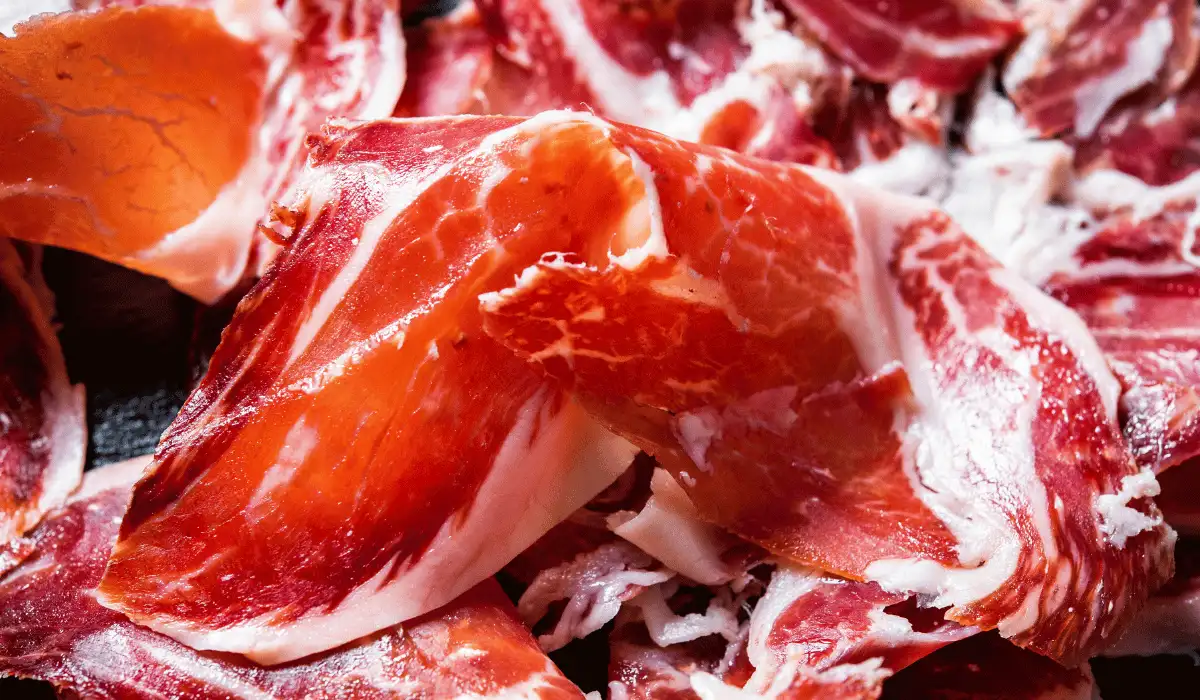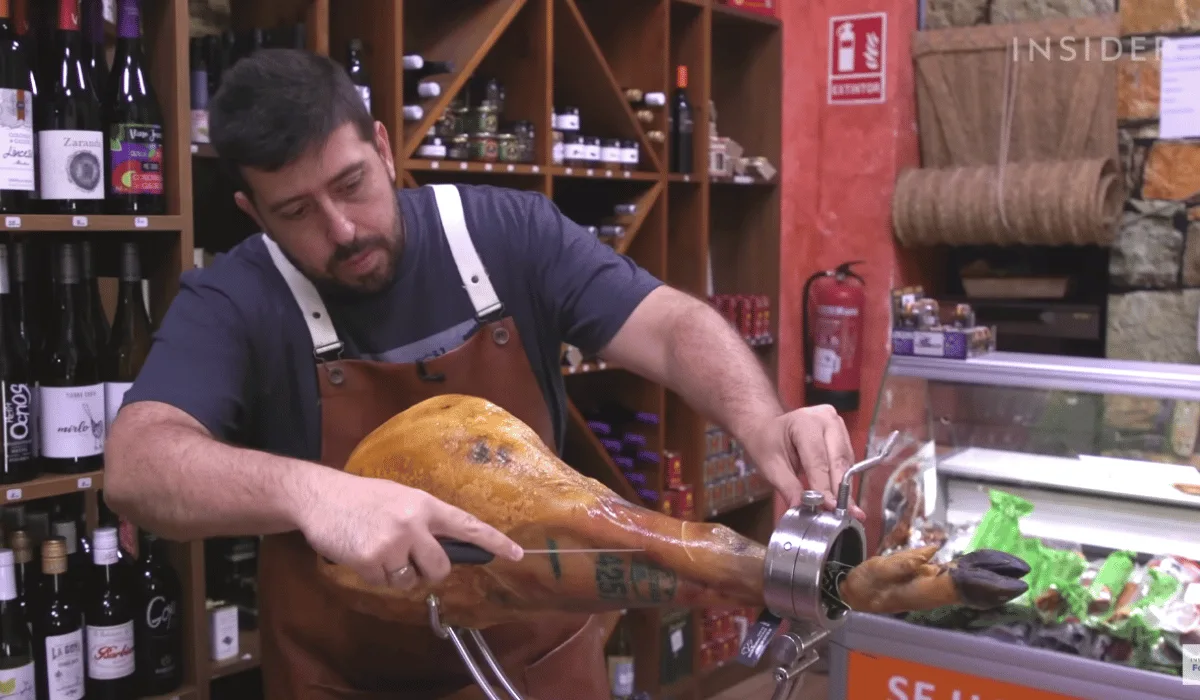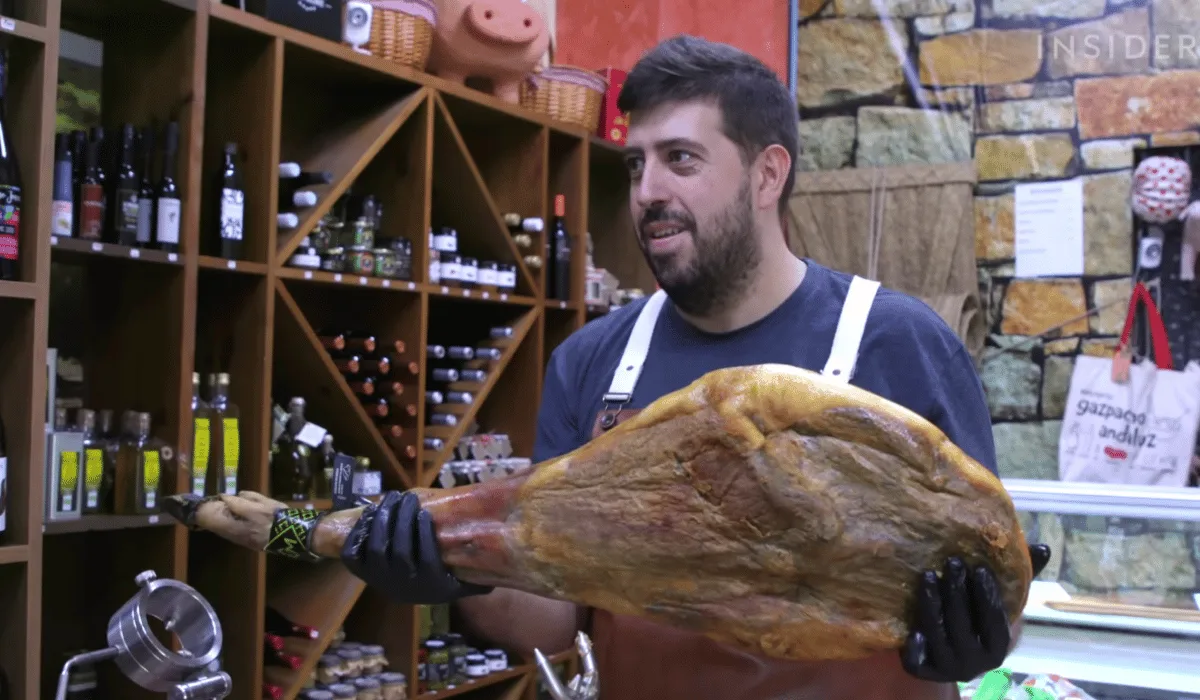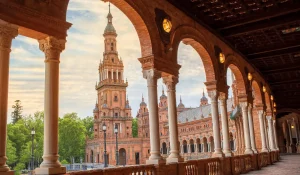Article Summary
Jamón Ibérico is more than a delicacy; it is a cultural and gastronomic emblem of Spain. Raised in the unique dehesa ecosystem and fed primarily on acorns, the Iberian black pig produces meat with unmatched flavor, marbling, and tenderness. Its centuries-old curing process, from salting to long maturation, transforms it into a luxury product where time, tradition, and careful craftsmanship converge. Each slice tells a story of heritage, patience, and terroir, making Jamón Ibérico not just a food, but a symbol of history, nature, and Spanish identity.
For my entire life, here in the heart of Seville, the sight of a majestic leg of Jamón Ibérico has been a constant. It hangs with reverence in the finest restaurants and the humblest tapas bars, a silent testament to our identity. You may have heard whispers of its price, with some exceptional pieces fetching upwards of $4,500. But let me tell you, to focus on the price is to miss the poetry entirely. That figure is merely a shadow cast by its true substance.
More Than a Delicacy, a Cultural Symbol
This is not just cured ham. It is a pillar of Spanish gastronomic and cultural heritage. It is a culinary treasure that encapsulates centuries of history, the wild spirit of a unique ecosystem, and the almost monastic patience of its artisanal process. In my family, we say that each slice contains a memory of the sun, the earth, and the wind. This article is my invitation to you. We will journey together, from the ancient oak forests of the dehesa to the silent, hallowed halls of the traditional curing cellars. Let us uncover the extraordinary story that transforms the Iberian pig into one of the most coveted jewels of the world’s palate. Here is an interview I did with the American television channel Insider Foods in 2020 👇.
Historical Roots: From Ancient Rome to the New World
The prestige of a food is built on its lineage. An unbroken history across centuries proves not only its intrinsic quality but its power to endure and cement itself in the collective soul of a culture. The story of Jamón Ibérico is a testament to this resilience, stretching from classical antiquity, through the Age of Discovery, and into our modern world.
An Ancestral Legacy
The origins of the Iberian pig are lost in the prehistoric mists of this peninsula. It is a direct descendant of the wild boar, Sus scrofa mediterraneus. This wild heart still beats within it, giving it a unique hardiness and a genetic code unlike any other pig on earth. Its value is no modern fad. As far back as 77 AD, the Roman writer and naturalist Pliny the Elder praised the superior quality of its meat in his writings. Think of that! For over two thousand years, this delicacy has been appreciated, establishing a profound antiquity that you can taste in every single bite. It is a flavor that has outlasted empires.
A Transatlantic Treasure
This remarkable pig played a silent but crucial role in one of history’s greatest chapters: the Age of Discovery. Its cured meat, able to withstand long journeys without spoiling, became a strategic provision for oceanic voyages. The proof is in the ledgers of history: Christopher Columbus himself included Iberian pigs on his ships during his second voyage to the Americas in 1493. This wasn’t a luxury; it was a necessity. It underscores the ham’s value as a durable, nutrient-rich food capable of sustaining the most demanding expeditions in history. This rich heritage is inseparable from the geographical cradle that has preserved and perfected the Iberian pig over the centuries: the Spanish dehesa.
The Sacred Ecosystem: The Dehesa and the Iberian Pig
If you ask me where the soul of Jamón Ibérico truly lies, I will point you to the dehesa. This is not just land; it’s a unique agro-sylvo-pastoral ecosystem. It is here, in the perfect symbiosis between an ancient breed of pig and a specific landscape, that the product acquires its inimitable identity. It is our version of terroir, a concept the French use for wine, but one we live and breathe for our ham. The interplay of animal, earth, and climate elevates it far beyond any other cured meat.

The Pure Breed: The Iberian Black Pig
The ham comes exclusively from the Iberian black pig, a special breed found only in the southern and western regions of the Iberian Peninsula. Its most magical trait is a genetic gift: the ability to infiltrate fat into its muscle fibers. This creates the characteristic veining, or marbling, that makes the meat so tender and flavorful. Within this breed, there are even rarer strains, like the “Manchado de Jabugo,” a line with distinctive black spots on its skin found only in the mountains of Huelva. This illustrates the rich diversity and added value found within this already exclusive world.
The Dehesa: A Paradise of Oak Trees
The dehesa is a landscape of rolling pastures dotted with holm oaks (encinas) and cork oaks (alcornoques). Here, the pigs live in complete freedom. The regulations are strict to protect this balance: no more than two pigs per hectare are permitted, ensuring each animal has ample space and natural resources. Their diet is whatever the countryside provides—olives, nuts, berries, roots. But the prized food, the “superfood” that defines the final product, is the acorn, or bellota. During the autumn fattening season, known as the montanera, a single pig can eat up to 10 kilograms of acorns per day. These acorns are rich in oleic acid, the same healthy fat found in olive oil, which fundamentally defines the flavor profile and silky quality of the ham’s fat.
A Seal of Excellence and Origin
To guarantee authenticity, Jamón Ibérico is protected by a rigorous system of labeling.
The ham is protected by the European Union’s Protected Denomination of Origin (D.O.P.) seal, which certifies that the entire process, from breeding to curing, occurs within a specific geographical area. The production is concentrated in five Spanish provinces: Salamanca, Huelva, Córdoba, Cáceres, and Badajoz, which are further divided into four distinct D.O.P.s.
The ultimate award for quality is the Black Label. Only a mere 6% of all Ibérico ham production earns this distinction. It certifies that the leg comes from a 100% purebred Iberian pig that has lived freely in the dehesa and fattened on acorns. It is the pinnacle of quality, a guarantee of perfection.
The Art of Curing: A Legacy of Patience and Tradition
The curing process is an ancestral art form, an alchemy that transforms raw material into a delicacy of unparalleled complexity. This magic is based on two simple ingredients: sea salt and time. This legacy of patience is responsible for developing the profound range of flavors and aromas that define Jamón Ibérico.

The Detailed Process, Step by Step
The method has been perfected over generations. There are four key stages:
- Salting (Salazón): Immediately after butchering, the legs (jamones from the rear, paletas from the front) are buried completely in sea salt. They remain there for 15 to 20 days, depending on weight. The salt draws out moisture, acting as a natural preservative and beginning the transformation.
- Resting (Asentamiento): After the salt is washed off, the legs spend about two months in a temperature and humidity-controlled room. This is a crucial, quiet phase. It allows the salt to penetrate evenly throughout the meat, ensuring a uniform cure before the long drying stages.
- Drying (Secado): Next, the hams are moved to a natural drying shed, or secadero. Here, for six to nine months, they hang in circulating air, often from windows opened to catch the mountain breezes. During this time, they begin to “sweat,” rendering their fat and developing the foundational aromas and flavors.
- Maturing in the Cellar (Maduración en Bodega): The final and longest stage takes place in subterranean cellars, or bodegas. In this cool, dark environment, the ham matures slowly. On average, this takes a couple of years, but the most exceptional pieces can cure for four, five, or even more years, reaching their absolute peak of flavor and texture.
The Sensory Experience: Carving, Character, and Tasting
The entire journey of Jamón Ibérico culminates in the moment of tasting—an experience that engages all the senses. The technique of carving, the visual appearance, and the flavor profile are as crucial as its origin and justify its status as a global luxury.
The Ritual of the Carve
Carving Jamón Ibérico is an art form, a skill practiced and perfected by a maestro cortador. Using a long, flexible knife, the goal is to produce thin, almost translucent slices. This maximizes the surface area, allowing the aromas to be released and the flavors to bloom on the palate. The visual presentation is paramount; the slices are often described as having a “divine shape” and a “regal appearance,” elevating the tasting to a ceremony.
Analysis of Flavor and Texture
The characteristics of a 100% Ibérico de Bellota ham are unmistakable:
- Flavor: Contrary to what you might expect from a salt-cured product, it is not overwhelmingly salty. It is savory and profound, with clear, persistent nutty notes that trace directly back to the pig’s acorn diet.
- Fat: The fat is the treasure. It is brilliant, unctuous, and has a buttery texture that melts on the tongue. This fat is the carrier of the ham’s most delicate aromas and flavors. It is where the essence of the dehesa is stored.
- Texture: The meat is exceptionally tender. The marbling of infiltrated fat creates a structure that causes each bite to practically dissolve in your mouth, releasing a cascade of complex nuances.
The Legacy of Jamón Ibérico
In the end, the high price of Jamón Ibérico is a direct consequence of its extraordinary legacy. It is the tangible result of a unique convergence of factors: the exclusivity of an ancient, sometimes incredibly rare, breed; the sustainability of a protected ecosystem that demands low-density farming; and above all, time. We measure this time not in hours or days, but in the years of patient craftsmanship required to perfect each leg.
More than a luxury food, Jamón Ibérico is the expression of a territory, a celebration of time, and, in its essence, an undying emblem of Spain’s natural and gastronomic heritage. It is a story I am proud to share, and one I hope you will have the pleasure of tasting for yourself one day.
Warmly,
Elio
Author

I’m Elio Tovani, a local Sevillian guide with WSET Level 2 certification. Through the Seville Tapas Tour, I combine history, culture, and gastronomy in small, authentic experiences across my city’s most charming neighborhoods. My passion for wine and Andalusian traditions drives me to share the real taste of Seville with every guest.




